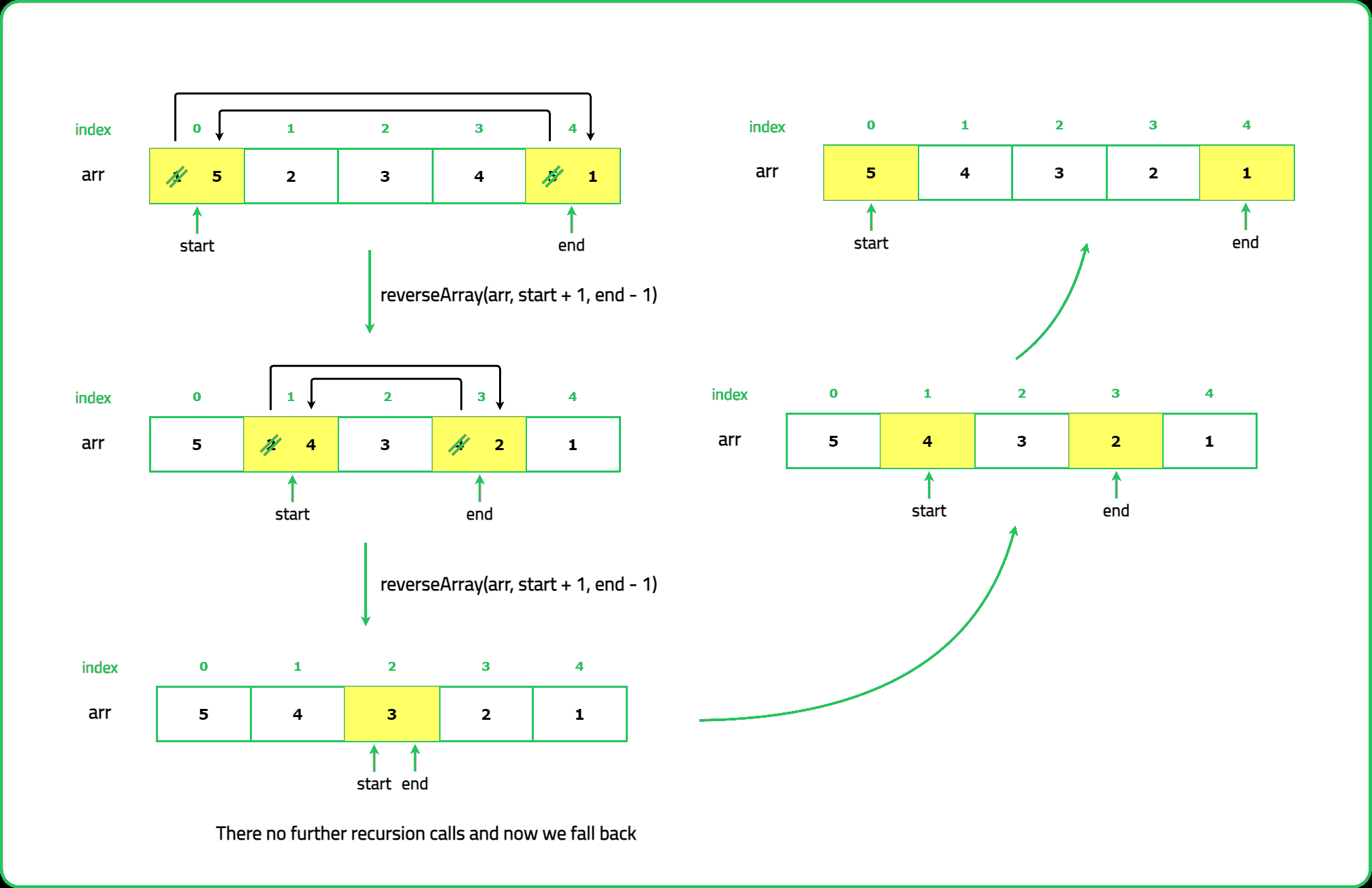Reverse an array
Beginner Problems
Basic Recursion
Easy
- Fun Fact: The concept of reversing an array is used in many popular applications like social media platforms or music streaming apps
- For instance, in apps like Instagram or Facebook, when you scroll through comments or posts, you're actually traversing a reversed array
- The latest posts/comments are at the beginning of the array and as you scroll, you move towards the older posts/comments at the end of the array
- Similarly, in a music app's playlist, the 'play in reverse order' functionality also uses this concept
- Also, reversing is a commonly used feature in data visualization, where one might want to flip the data to view it from a different perspective
Given an array nums of n integers, return reverse of the array.
Examples:
Input : nums = [1, 2, 3, 4, 5]
Output : [5, 4, 3, 2, 1]
Input : nums = [1, 3, 3, 3, 5]
Output : [5, 3, 3, 3, 1]
Input : nums = [1, 2, 1]
Constraints
- 1 <= n <= 100
- 1 <= nums[i] <= 100
Company Tags
TCS
Cognizant
Accenture
Infosys
Capgemini
Wipro
IBM
HCL
Tech Mahindra
MindTree
